Also available in: Deutsch
Ipoh is one of the largest cities in Malaysia, yet it’s not on most travelers’ itineraries. The “City of Millionaires,” as Ipoh is sometimes called due to its rich tin deposits in the 1920s and 1930s, has a lot to offer.
The city is located on the way from the Cameron Highlands to Penang and is perfect for a stopover. Beautiful old colonial buildings and plenty of street art make Ipoh truly worth seeing.
Ipoh – Discover the City on the Heritage Trail
Furthermore, you can discover impressive cave temples in Ipoh, for example. Here you can find out what you shouldn’t miss in Ipoh and what we experienced in this city during our trip to Malaysia.
How to Get To Ipoh
The Sultan Azlan Shah Airport is located about 6 kilometers outside the city center of Ipoh and is currently served only by smaller airlines such as Firefly, Malindo Air, or Tigerair. You can take these flights either from Singapore or from Johor Bahru. You can find an overview on Skyscanner.
Ipoh is also served on two different routes from Kuala Lumpur or from Butterworth/Penang. From the capital, Kuala Lumpur, there is the ETS (Electric Train Service) from the main station, KL Sentral. The trains run over 15 times a day, and a ticket costs between 25 RM and 35 RM, depending on the train. From Butterworth, the town on the mainland across from Penang, the ETS Train runs to Ipoh 10 times a day. Tickets cost between 23 RM and 42 RM, depending on the train.
The Amanjaya Bus Terminal is served by many different cities in the country, including Kuala Lumpur, the Cameron Highlands, or Penang. It is located about 15 kilometers outside the center of Ipoh. The buses run very regularly to all corners of the country. You can find all information about departure times and tickets at 12go.asia.
By the way, during our journey from the Cameron Highlands to Ipoh and onward to Penang, we used Perak Transit. The staff at the ticket counters were very friendly and helpful, and the bus ride went smoothly as well. We can only recommend this company.
Note: To get from the airport, train station, or bus terminal to your hotel, it’s advisable to take a taxi. The drivers usually don’t turn on their meters, so you’ll have to do some negotiating. The standard price is around 25 RM for a ride.
Accommodation in Ipoh – Our Hotel Tip
In the city center of Ipoh, you will find a wide range of affordable accommodations. We stayed at the French Hotel and were very satisfied. The rooms weren’t particularly large, but they were very clean and modern. The staff was always super friendly. We especially liked the location because we could reach many places on foot from there.
You can find more hotels in Ipoh on this page.
1. Heritage Trail
Ipoh is divided into two parts by the Kinta River: the historical old town and the new town. The famous Heritage Trail is also located in the old town, where you can explore many of the sights and old colonial buildings.
The Heritage Trail is a great way to explore Ipoh on foot. You can find a map either here or at the tourist information near the large lawn, which was originally used as a cricket field during the British colonial era.
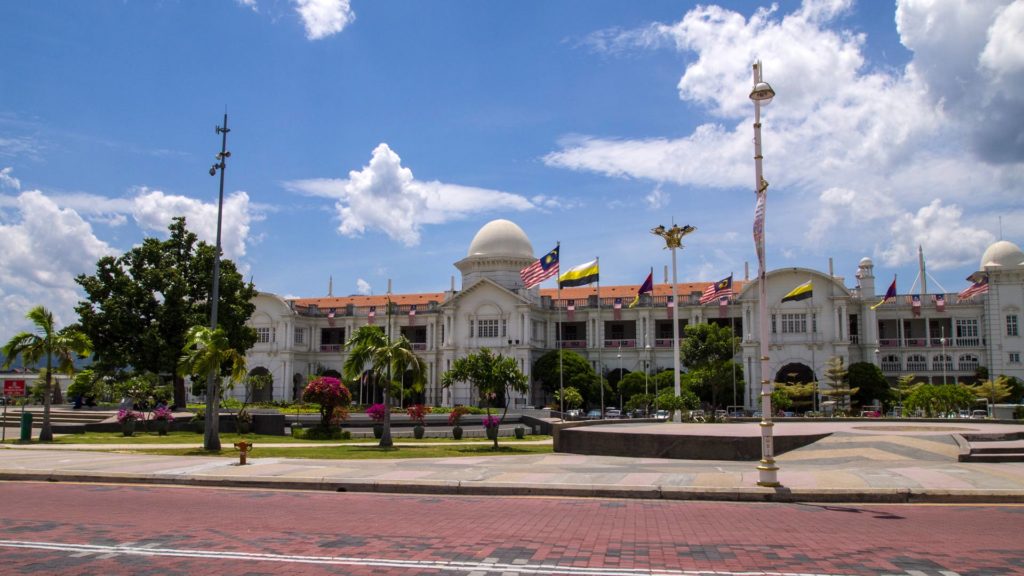
A good starting point is the beautiful Ipoh train station, which is also referred to as the Taj Mahal of Ipoh by locals. Not only will you find the train station here, but also the High Court and the Town Hall right across from it.
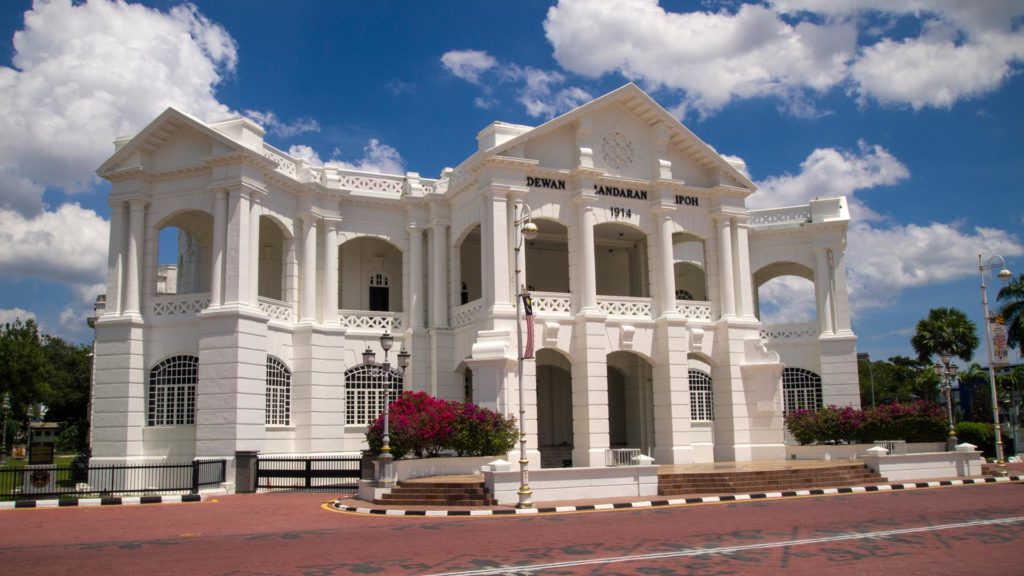
A few meters away, you’ll find the next two highlights: the Sultan Idris Shah II Mosque and the Birch Memorial Clock Tower.
The mosque is the state mosque of the state of Perak, whose capital is Ipoh. It was opened in 1978 by the eponymous Sultan Idris Shah II and is very well attended today, especially for Friday prayers.
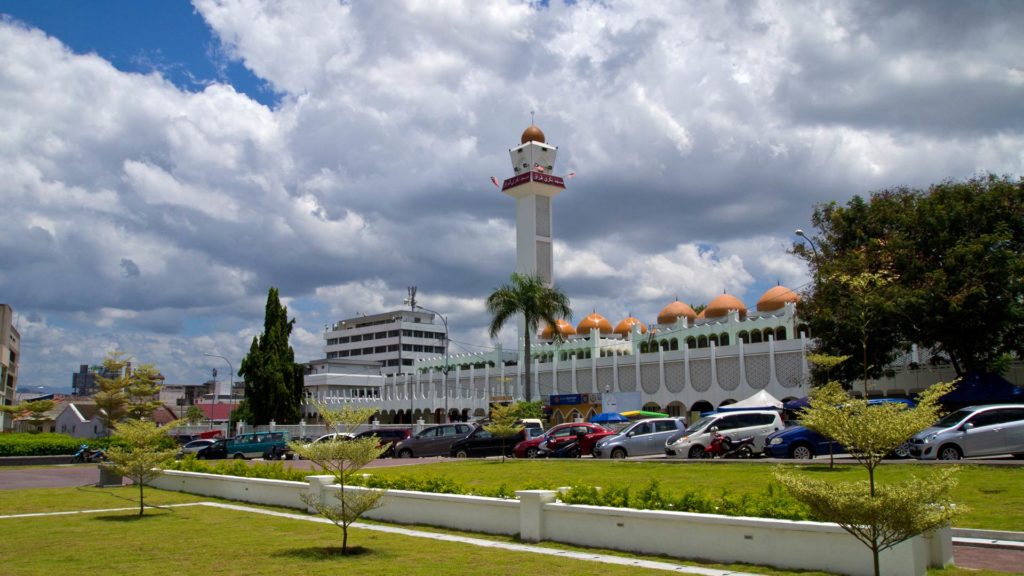
Built in 1909, the Birch Memorial Clock Tower, one of Ipoh’s most famous landmarks, is located directly across from the Sultan Idris Shah II Mosque. It was erected in memory of James W.W. Birch, who was the first British resident of Ipoh and was assassinated in 1875.
Tip: Next to the Birch Memorial Clock Tower, there is a kind of food court where you can try many dishes of Malaysian cuisine. Many visitors to the mosque eat there, and the people are very friendly. You’ll find cheap and authentic food that you shouldn’t miss. Also, Ipoh is known for its white coffee, which you should definitely try there.
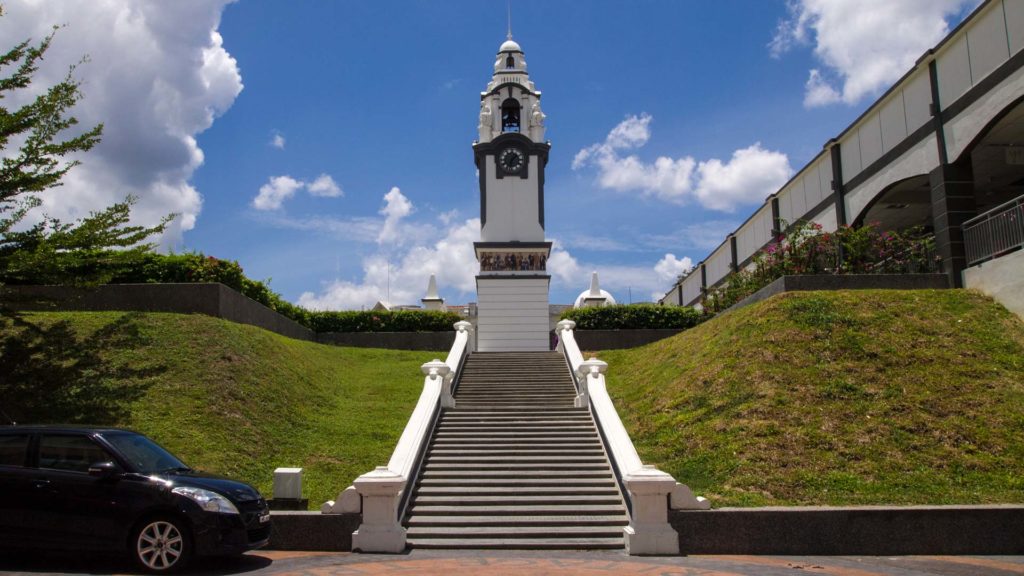
The Heritage Trail continues through the old town, allowing you to discover many more colonial buildings, such as the Majestic Hotel, the Straits Trading Company, the Padang Mosque, or the Ipoh Club.
Sometimes you’ll also find painted footprints on the sidewalks that you can follow. The next great stop we can recommend is the Roquette Cafe. Here, you can take a break and have something to drink while admiring some artwork inside.

Another highlight is the small and narrow Concubine Lane. In this little alley, you’ll find charming restaurants and some souvenir shops that further immerse you in the historic Ipoh. The city really knows how to impress.
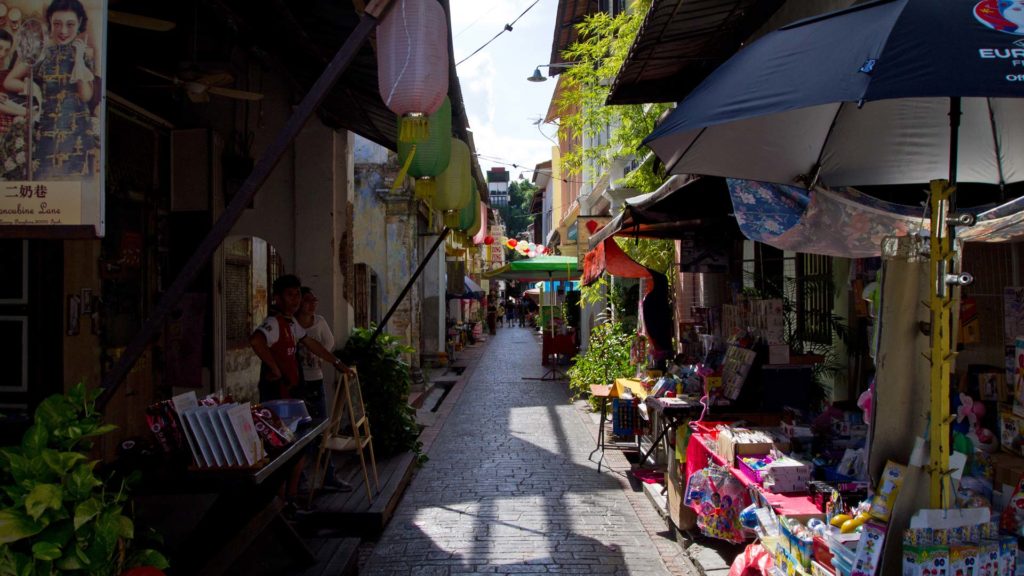
2. Ipoh’s Old Town
Away from the Heritage Trail, the old town is no less interesting. It features gorgeous building facades that you’ll discover simply by taking a stroll and letting yourself drift through the old town.
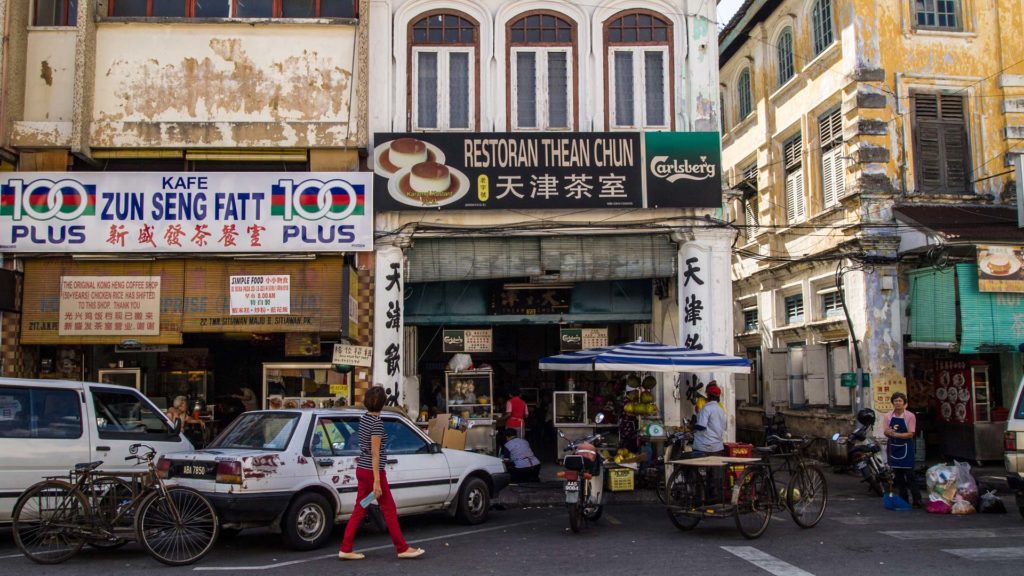
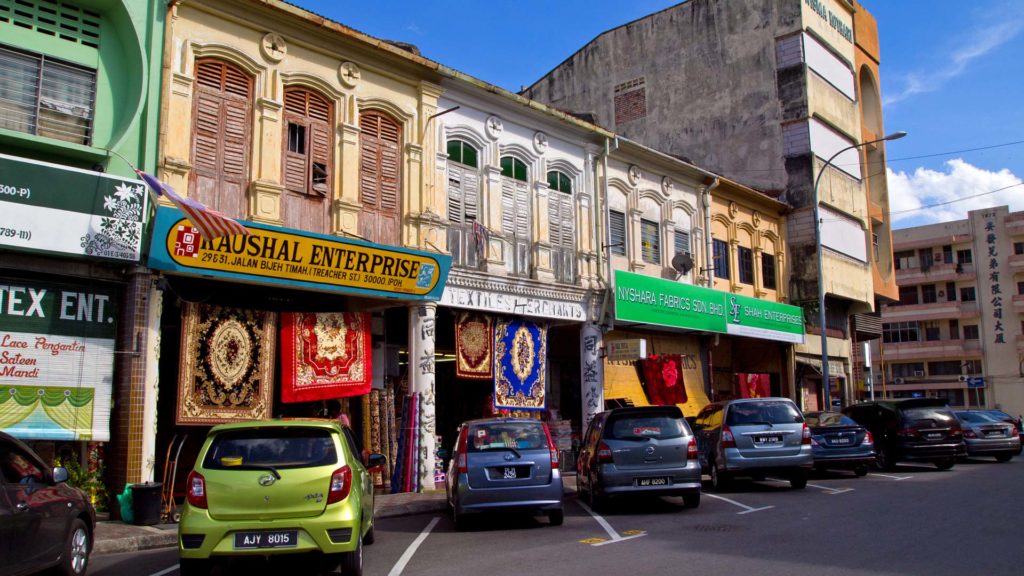
You also shouldn’t miss the Market Lane, a parallel street to Concubine Lane. With its colorful umbrellas and beautiful wall paintings, it is one of the most charming alleys in the old town for me.
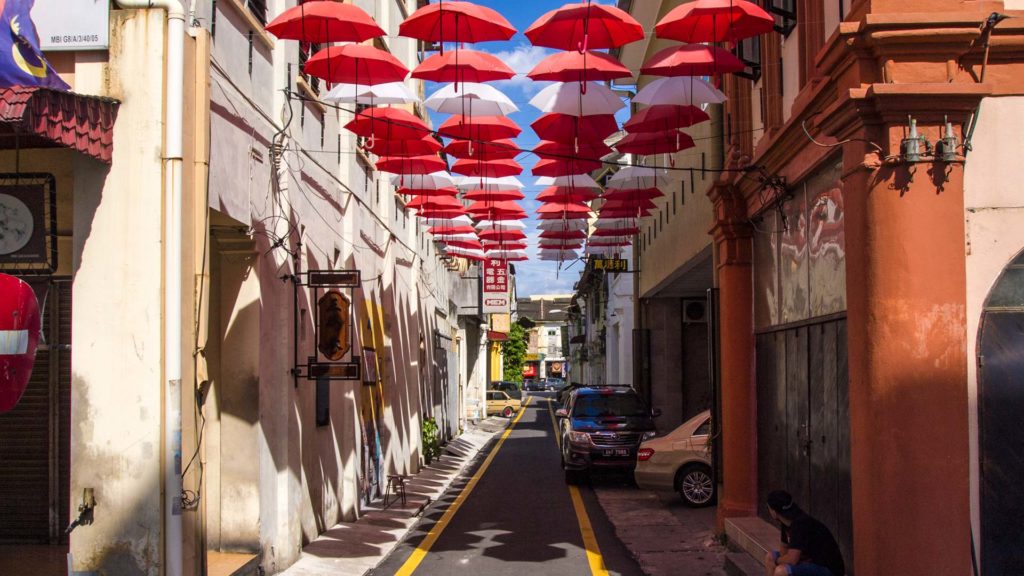
3. Street Art in Ipoh
Many travelers go to Penang for the impressive street art, but Ipoh also has plenty of artistic works to offer. Some of them are listed on a map showing where to find this street art along the Ipoh Mural Art Trail in the old town.
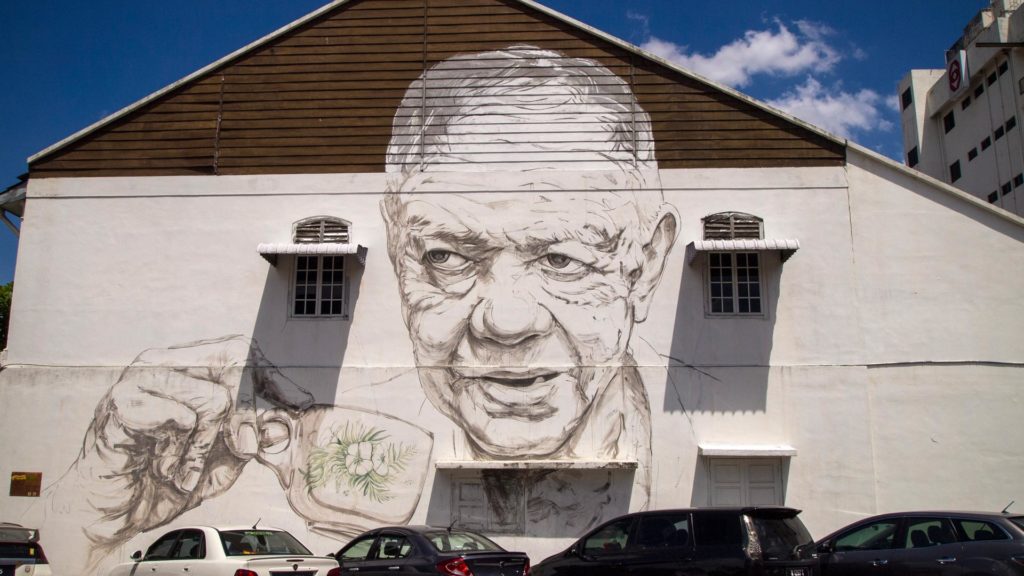
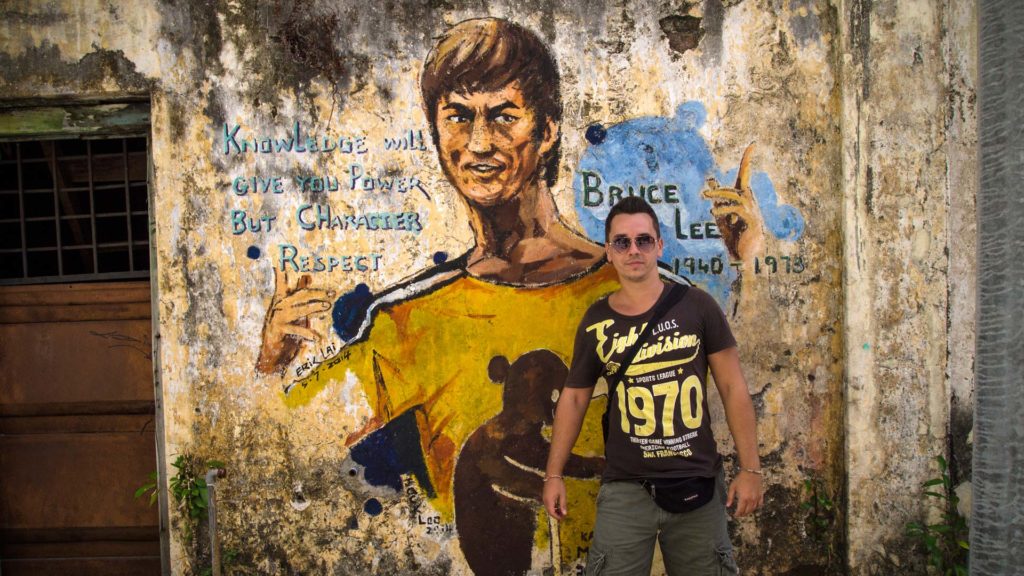
But not every piece of street art is listed on this map, so you can discover many more paintings while strolling through the old town or even at the beginning of the new town, right after the bridges over the Kinta River: street art of Bruce Lee, Nelson Mandela, and much more.
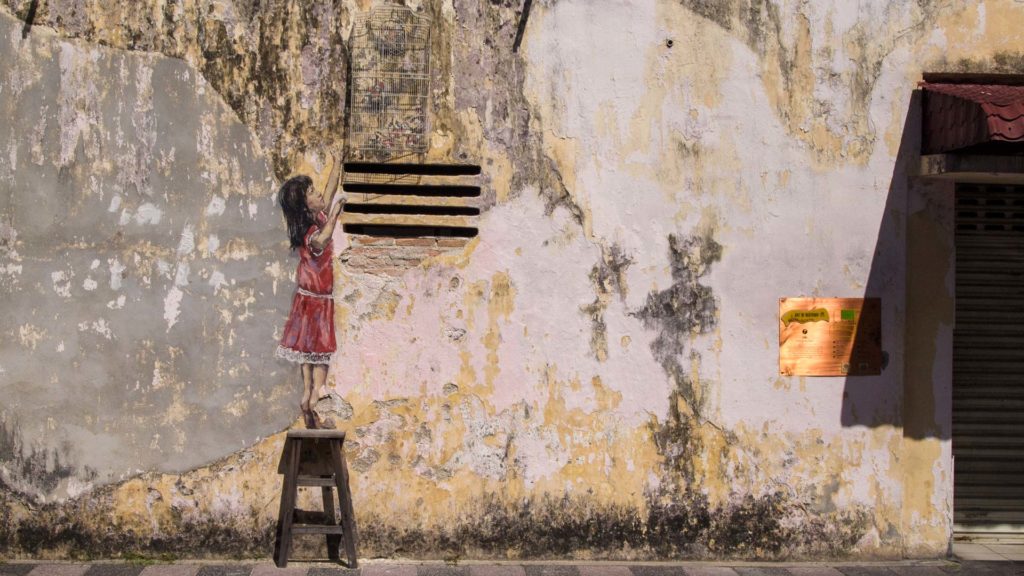
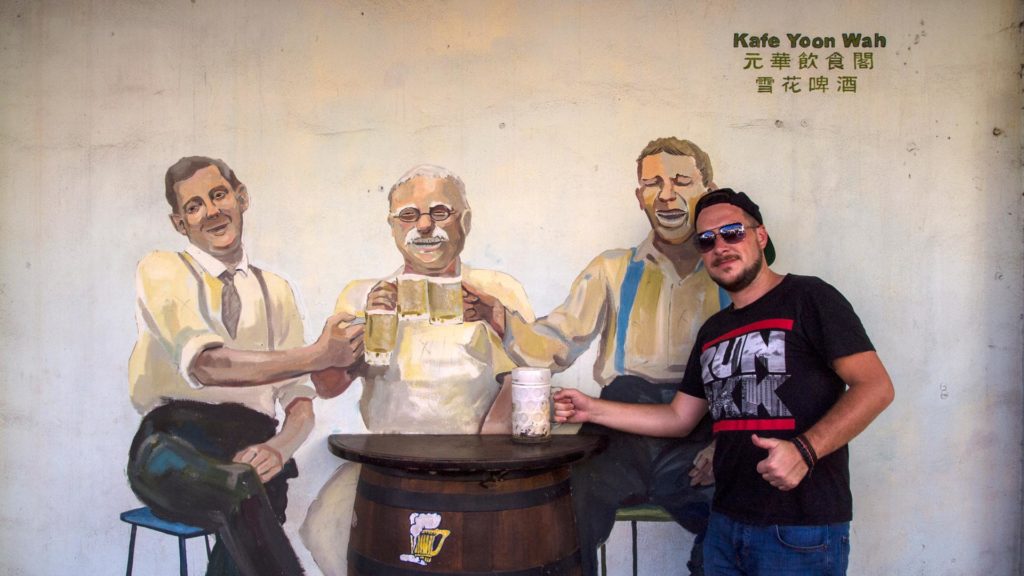
Around every new corner and in many small alleys, you can see new pieces and take lots of great photos. We can only advise you to let yourself drift through Ipoh if you’re interested in street art. There may be fewer murals than in Penang, but they are just as beautiful and fascinating.

4. The Temples of Ipoh
In addition to its old town, Ipoh is also famous for its cave temples. The three most well-known temples are Kek Lok Tong, Sam Poh Tong, and Perak Tong. You can easily visit the first two together. Unfortunately, Perak Tong is a bit farther away, which is why we skipped it this time.
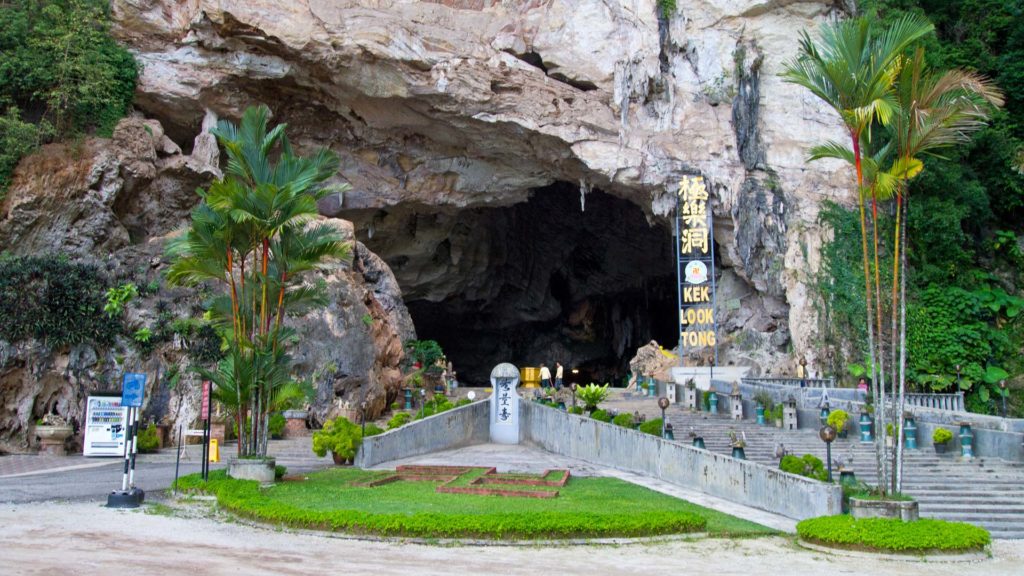
The Kek Lok Tong was the first cave temple we visited. It has been used as a place of worship since 1920. Inside the huge limestone cave, you can see many stalactites and stalagmites as well as several statues of Chinese Buddhas and Bodhisattvas.
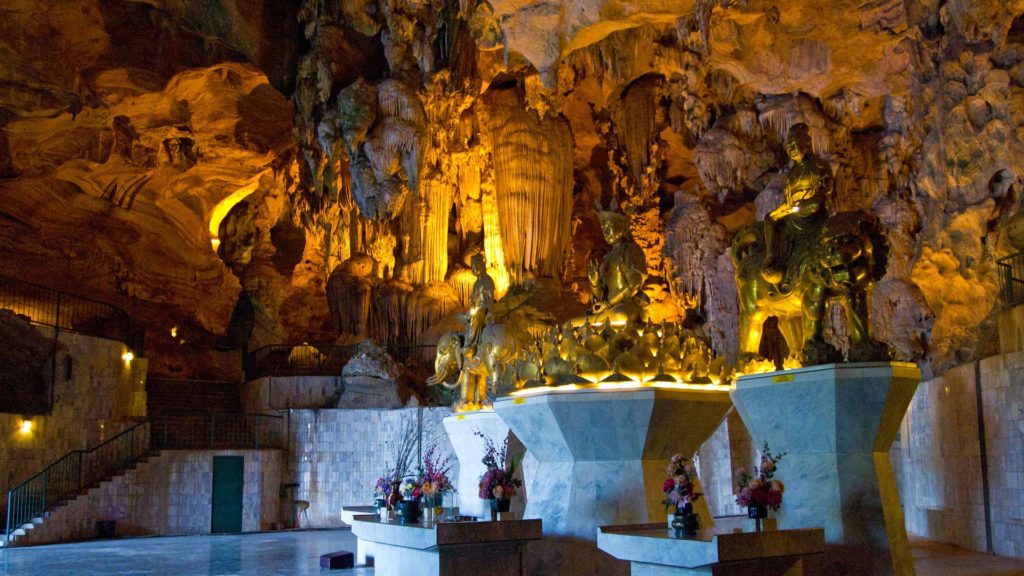
What makes this temple complex special, however, is the large garden with a pond located inside. If you walk through the cave, you’ll arrive at a pleasantly quiet garden. Locals use it for exercise or simply to relax.

On the way to the second large and well-known temple, Sam Poh Tong, there are two other cave temples: Ling Sen Tong and Nam Tian Tong. You can make a short stop here to see the complexes and the caves with statues inside.
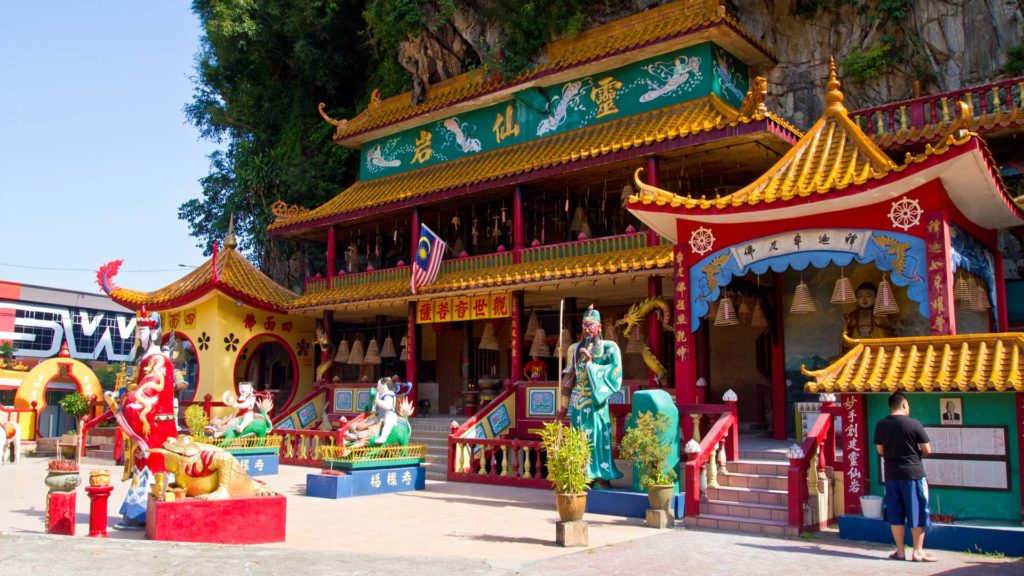
Sam Poh Tong is considered the best-known cave temple of Ipoh. It was founded as early as 1912 and is one of the most frequently visited temples by tourists. However, since there isn’t a large tourist rush in Ipoh, you don’t have to worry about the temple being too crowded. When we visited, there were only a handful of other tourists besides us.
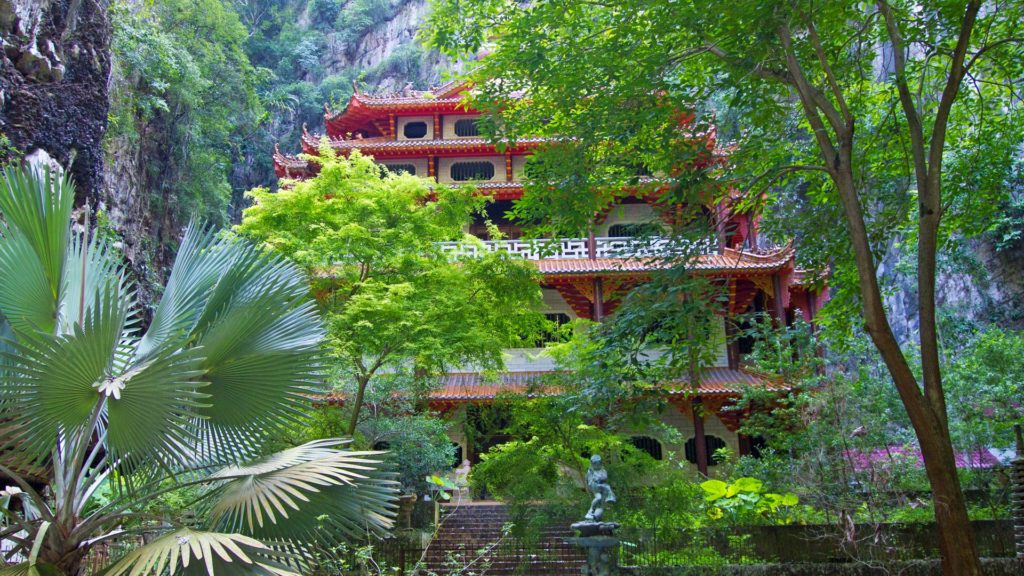
From the outside, Sam Poh Tong is very impressive, but the interior is also well worth seeing. There, in addition to another temple building surrounded by rocks, you’ll find a turtle pond. The tranquility and natural surroundings make these cave temples very fascinating.
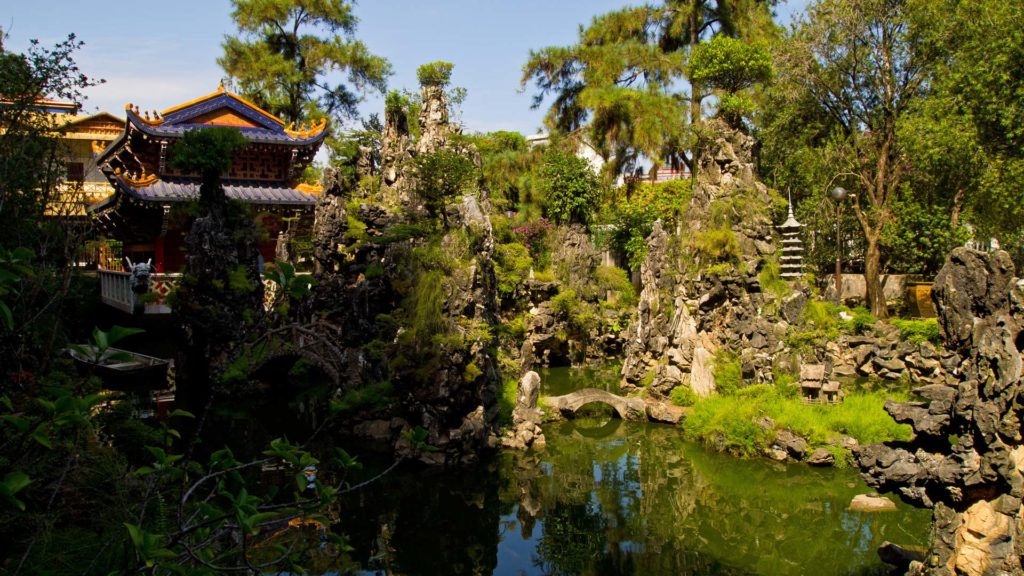
Info: The best way to do this tour is by taxi in Ipoh. As always, the price is negotiable. We paid 60 Ringgit for a nearly three-hour tour, including the final ride to the Amanjaya Bus Terminal. By the way, you can visit all the temples free of charge. A donation, however, is gladly accepted.
5. Nightlife in Ipoh
You can’t really call the nightlife in Ipoh by that name. The options for going out are a bit limited because as soon as the sun goes down, the city becomes extremely quiet. Still, there are two things we can recommend.
One is the popular Tauge Ayam dish. A specialty in Ipoh. A popular restaurant for it is Lou Wong on Jalan Yau Tet Shin. It’s always busy there, and the restaurant is very full. That’s not a problem, though, because it’s a sign of good food. Also, there is plenty of seating.
The area around Lou Wong is also often referred to as a night market, but during our visit, we found only various restaurants and no additional stalls. It’s great for eating, but not so much for shopping.
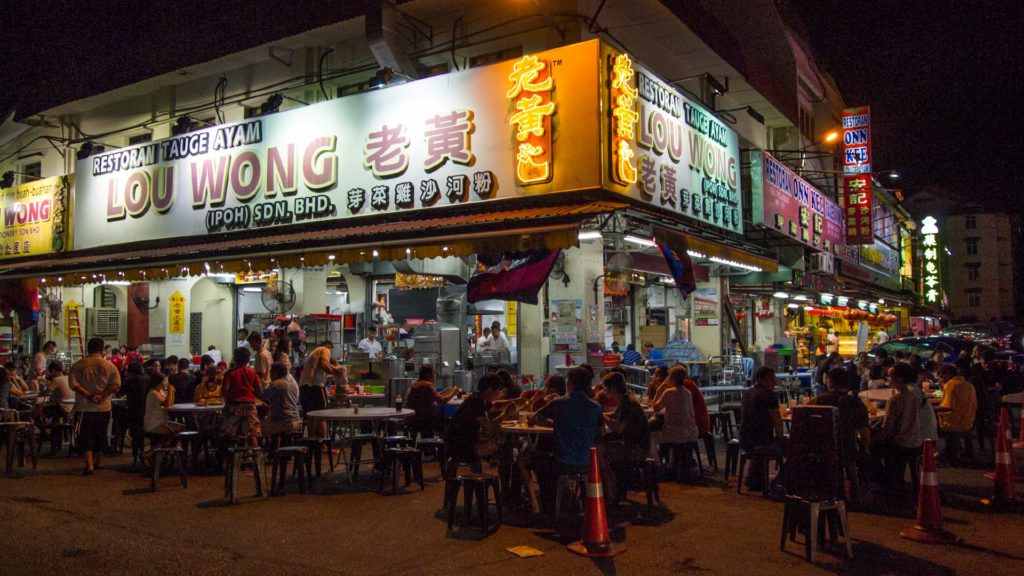
When ordering, you don’t have to think too hard about what to get because there’s only one dish – Tauge Ayam. It’s fried chicken in a soy sauce with scallions. It comes with mung bean sprouts, which we often call soy sprouts, plus either rice or noodles. Definitely try it – it’s very tasty!
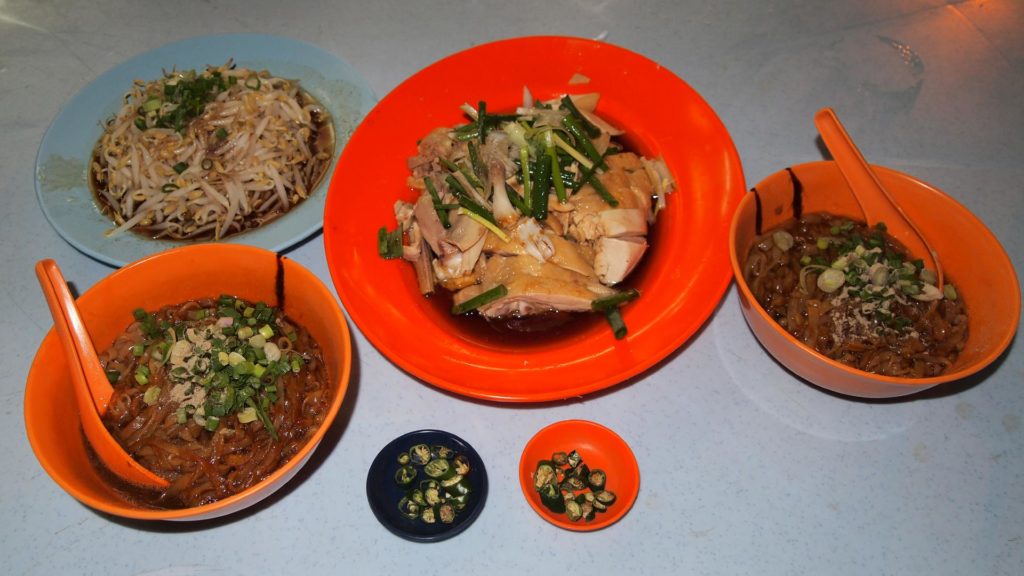
There are also a few markets in Ipoh you can visit. The Gerbang Malam is the most famous and can be found very close to the Lou Wong restaurant.
You can find another weekend market near the bridge on Jalan Sultan Iskandar. If you follow the bridge from the old town towards the new town, you’ll see a market on the left in Hala Pasar Baru that stretches across two more streets.
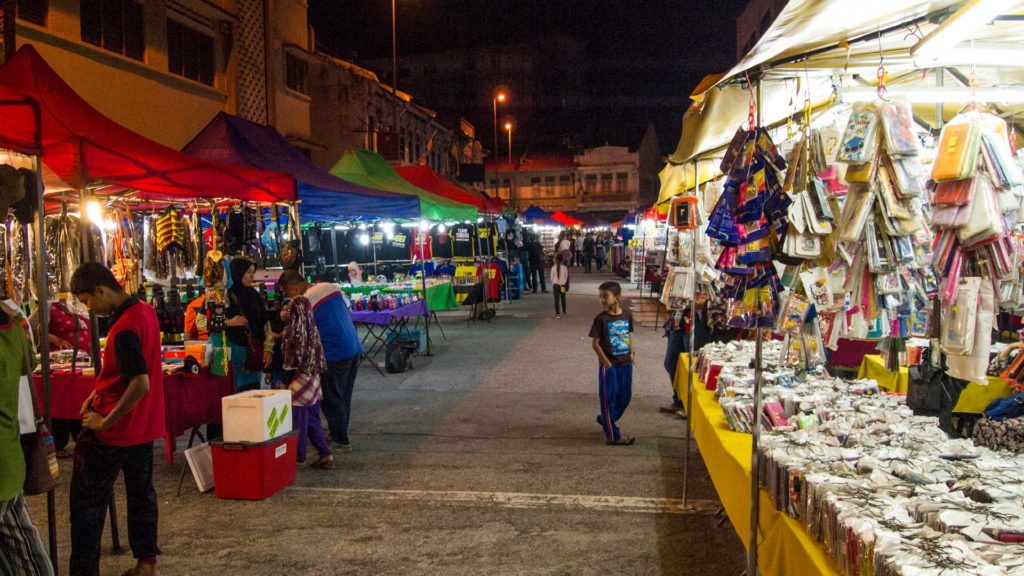
You’ll mostly meet locals at this market, buying clothes, accessories, or other items. There are also plenty of food stalls where you can sample Malaysian cuisine. Definitely worth a visit on the weekend.
Conclusion
Ipoh absolutely positively surprised us. It was actually the destination we might have cut from our last trip to Malaysia. In hindsight, we’re very glad we didn’t, since a visit to Ipoh is totally worth it!
For example, if you’re heading to Penang for its fascinating street art, then a stop in Ipoh is just right as well. You can find a lot of street art here, too, and will constantly come across new paintings. The old and very well-preserved colonial buildings are also extremely impressive.
In addition, Ipoh is not as overrun by tourists as Penang can sometimes be. It can happen here that you won’t see another Western tourist all day. Ipoh is definitely a recommendation and still a piece of genuine, authentic Malaysia.
Have you ever been to Ipoh or would you like to visit the city? What did you particularly like? We look forward to your comment.

Tobi
Hi, I'm Tobi, author, passionate travel blogger and founder of this blog. I've been traveling the world a lot since 2013, mostly in Southeast Asia, but sometimes also in Europe. The Thai island of Koh Phangan has become my home base when I'm not traveling. Find out more on our About Us page.